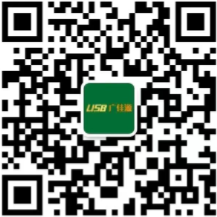 Mr. Chen:136-6225-2835
Mr. Chen:136-6225-2835
 Miss Chen:189-2385-0895
Miss Chen:189-2385-0895
Shenzhen Guangjiayuan Electronic Technology Co., Ltd
Mr. Chen: 136-6225-2835 (same WeChat account)
QQ: 979285705
Miss Chen: 189-2385-0895 (same WeChat account)
QQ: 2391552662
Chen Weiting :135-3824-4786 (same WeChat account)
Chen Weihao: 139-2459-4393 (same WeChat account)
Tel: 86-0755-33182327
Email: gjydz88@163.com
Website: www.usb-type.com
Address: Building 10, Hongxing Gebu Qixiang, Songgang Town, Bao'an District, Shenzhen, Guangdong Province
USB type-c is the specification for USB connector systems, which are becoming increasingly popular on smartphones and mobile devices, and can be used for power and data transmission. Unlike earlier USB products, it is also reversible - so you don't need to try inserting multiple times.

1. What is USB type-c
USB C is a relatively new standard aimed at providing high-speed data transmission of up to 10Gb/s and power of up to 100W. These features can make USB-C the true universal connection standard for modern devices.
2. Function Introduction
The USB C interface has three main functions:
It has a flippable connection interface. The design of the interface allows the plug to flip relative to the socket.
It supports USB 2.0, USB 3.0, and USB 3.1 Gen 2 standards. In addition, it can also support third-party protocols such as DisplayPort and HDMI in an operating mode called Alternate Mode.
It allows devices to negotiate and select appropriate power flows through interfaces.
3. Signal diagram
The USB type-c connector has 24 pins. Figures 1 and 2 show the pins of the USB type-c socket and plug, respectively.

4. The USB 2.0 differential pair D+and D-pins are differential pairs used for USB 2.0 connections. There are two D+pins and two D-pins in the socket.
However, these pins are interconnected, and in reality, only one USB 2.0 data differential pair is available for use. Redundant design is only intended to provide flippable connectors.
5. The power and ground pins VBUS and GND are the return paths for the power and signal. The default VBUS voltage is 5 V, but the standard allows devices to negotiate and choose VBUS voltage instead of the default value. Power transmission allows VBUS to have a voltage of up to 20 V. The maximum current can also be increased to 5A. Therefore, USB type-c can provide a maximum power of 100W.
High power flow may be useful when charging large devices such as laptops. Figure 3 shows an example of RICHTEK, where a buck boost converter is used to generate the appropriate voltage requested by the laptop.
Please note that power transmission technology makes USB type-C more versatile than the old standard, as it adapts the power level to the needs of the load. You can use the same cable to charge your smartphone and laptop.
6. There are two sets of RX differential pairs and two sets of TX differential pairs for RX and TX pins. One of these two RX pairs and the TX pair can be used for the USB 3.0/USB 3.1 protocol. Due to the flippable nature of the connector, it is necessary for the multiplexer to correctly reroute the data on the differential pair used through the cable.
Please note that the USB type-C port can support the USB 3.0/3.1 standard, but the minimum feature set of USB type-C does not include USB 3.0/3.1. In this case, the USB 3.0/3.1 connection does not use RX/TX pairs and can be used by other USB type-c functions, such as standby mode and USB power protocol. These functions can even utilize all available RX/TX differential pairs.
7. The pins CC1 and CC2 are channel configuration pins. They perform many functions, such as cable connection and removal detection, socket/plug direction detection, and current broadcasting. These pins can also be used for communication required for Power Delivery and Alternate Mode.
Figure 4 below shows how the CC1 and CC2 pins display the direction of the socket/plug. In this figure, DFP represents the downstream facing port, which serves as the host or power supply in data transmission. UFP represents upstream facing ports, which are devices connected to hosts or power consumers.

DFP pulls CC1 and CC2 pins up through the Rp resistor, but UFP pulls them down through Rd. If there is no cable connected, the source sees a logic high level at the CC1 and CC2 pins. Connecting a USB type-c cable can create a current path from a 5V power supply to ground. Due to the fact that there is only one CC line inside the USB type-c cable, only one current path is formed. For example, in the figure above in Figure 4, the CC1 pin of DFP is connected to the CC1 pin of UFP. Therefore, the voltage of DFP CC1 pin is lower than 5 V, but DFP CC2 pin is still at the logic high level. Therefore, by monitoring the voltage on the DFP CC1 and CC2 pins, we can determine the cable connection and its direction.
In addition to the cable direction, the Rp-Rd path is also used as a means of transmitting source current capability information. For this purpose, the power consumption (UFP) monitors the voltage on the CC line. When the voltage on the CC line has its lowest value (approximately 0.41 V), the source can provide default USB power supplies of 500 mA and 900 mA for USB 2.0 and USB 3.0, respectively. When the CC line voltage is approximately 0.92 V, the source can provide a current of 1.5 A. The highest CC line voltage is approximately 1.68 V, corresponding to the source current capacity of 3A.
8. VCONN pin
As mentioned above, USB type-c is designed to provide ultra fast data transfer speed and high-level power flow. These features may require the use of special cables for electronic labeling through the use of chips internally. In addition, some active cables utilize re driving chips to strengthen signals and compensate for losses caused by cables, etc. In these cases, we can provide power to the VCONN pin by applying a 5V, 1W power supply to the circuit inside the cable. As shown in Figure 5.

As you can see, the active cable uses a Ra resistor to pull down the CC2 pin. The value of Ra is different from Rd, so DFP can still determine the cable direction by checking the voltage on DFP CC1 and CC2 pins. After determining the cable direction, the channel configuration pins corresponding to the "active cable IC" will be connected to a 5V, 1W power supply to supply power to the circuits inside the cable. For example, in Figure 5, the effective Rp Rd path corresponds to the CC1 pin. Therefore, the CC2 pin is connected to the power supply represented by VCONN.
9. SBU1 and SBU2 pins
These two pins correspond to the low-speed signal path used only in standby mode.
After familiarizing ourselves with the fixed USB C standard, let's briefly introduce the USB power supply and backup mode.
As mentioned above, devices using the USB type-C standard can negotiate and select the appropriate level of power flow through the interface. These power negotiations are achieved through a protocol called USB Power Delivery, which is a single line communication on the CC line discussed above. Figure 6 below shows an example of USB power supply, where the receiver sends a request to the source and adjusts the VBUS voltage as needed. Firstly, a 9 V bus is required. After the source stable bus voltage is 9V, it will send a "power ready" message to the receiver.
Then, the receiver requests a 5V bus, and the source provides it and sends a "power ready" message again.

It is worth noting that "USB power supply" not only involves negotiations related to power supply, but other negotiations, such as those related to standby mode, are all completed using the power supply protocol on the standard CC line.
11
PCB设计布线要求
Contact person:
Mr. Chen 136-6225-2835 (same WeChat account)
Miss Chen 189-2385-0895 (same WeChat account)
Chen Weiting 135-3824-4786 (same WeChat account)
Chen Weihao 139-2459-4393 (same WeChat account)
Address:
Building 10, Hongxing Gebu Qixiang, Songgang Town, Bao'an District, Shenzhen, Guangdong Province
 |
 |
| Technology 1 | Technology 2 |